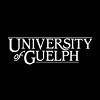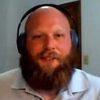Explore all the information on
Swine nutrition
Pigs require a number of essential nutrients to meet their needs for maintenance, growth, reproduction, lactation, and other functions. However, factors such as genetic variation, environment, availability of nutrients in feedstuffs, disease levels, and other stressors may increase the needed level of some nutrients for optimal performance and reproduction.
Swine require six general classes of nutrients: water, carbohydrates, fats, protein (amino acids), minerals, and vitamins. Energy, although not a specific nutrient, is an important nutritional component and is primarily derived from the oxidation of carbohydrates and fats. In addition, amino acids (from protein) that exceed the animal’s requirements for maintenance and tissue protein synthesis provide energy when their carbon skeletons are oxidized. Antibiotics, chemotherapeutic agents, microbial supplements (prebiotics and probiotics), enzymes, and other feed additives are often added to swine diets to increase the rate and efficiency of gain, to improve digestibility, and for other purposes, but they are not considered nutrients.
Pigs require a more concentrated diet and should be fed a less-fibrous feed than cattle, sheep, or horses. As they grow, their nutritional requirements change and the diet should meet their needs in various phases of growth and stages of production.
Andrea Bonetti (University of Bologna) gives a presentation on botanicals and their impact on inflammation and oxidation, during the 11th Symposium on Gut Health in Production of Food Animals in St. Louis, USA....
Comments : 0
Recommendations: 0
Dan Grum (Purina Animal Nutrition) talks about tail docking in pigs, and presents studies on the microbial community of inflamed and necrotic tails, as well as the possible use of direct-fed microbials for this issue, during the 11th Symposium on Gut Health in Production of Food Animals in St. Louis, USA....
Comments : 0
Recommendations: 0
.jpg&w=3840&q=75)

Practical AMINONIR® Application: From sampling to economic benefits
Suggested link
Caroline González-Vega (Cargill) presents research on the effects of a medium-chain fatty acid blend and a phytogenic feed additive on growth performance and gut health of Escherichia coli-challenged pigs, during the 11th Symposium on Gut Health in Production of Food Animals in St. Louis, USA....
Comments : 0
Recommendations: 0
Diana Ayala (Purina Animal Nutrition) presents research to determine the underlying bacterial cause of PWD and a potential vertical transmission from sows to pre-weaned piglets, as well as to determine whether a customized direct-fed microbial (DFM)-based product could reduce the pathogens isolated from affected pigs, during the 11th Symposium on Gut Health in Production of Food Animals in St. Louis, USA....
Comments : 0
Recommendations: 0
The livestock sector is responsible for providing healthy food to society and ensuring their health. Production is changing parameters and values of productive performance due to the obligation to replace the therapeutic approach with a more holistic approach in which good nutrition is necessary to eliminate those practices that are...
Comments : 6
Recommendations: 4
Introduction: Smallholder pig farmers in east Africa typically wean pigs at 6 to 8 weeks. Farmers report that commercially prepared pig diets are too expensive and therefore typically feed forage and food waste. This results in low average daily gain (ADG), especially for the newly weaned pig. The objective was to describe the weaning weights of local and crossbred Ugandan pigs purchased from smallholder farmers and to compare the growth rate of the pigs fed forage- or...
Comments : 1
Recommendations: 0
Introduction: The use of fine ground diets improve technical performance parameters like average daily weight gain (ADG) and feed conversion ratio (FCR). However, the use of fine ground diets is a risk factor for the formation of gastric ulcers in swine, which have a negative effect on animal welfare. The objective of this study is to improve animal welfare by reducing stomach ulcers without negative effects on animal performance parameters like FCR and...
Comments : 0
Recommendations: 0
Introduction: Plasma of porcine origin often contains PEDV RNA which raises some concerns about biosecurity and transmission of viruses within pig populations. In contrast, it is well recognized that the addition of plasma to pig feed enhances immune reactions and also has some intrinsic inhibition on virus survival. The objective of this study was to determine if there is any benefit to the diet containing spray-dried plasma (SDP) of bovine origin during acute PEDV...
Comments : 0
Recommendations: 0


Study of Effectiveness of Hygen Pro® Strept Phytobiotic versus Clinical Strains of Streptococcus Suis of Porcine Origin
Suggested link
Introduction Zearalenone (ZEA) is a worldwide distributed mycotoxin as indicated by the International Agency for Research on Cancer (IARC). 1–3 Its toxicity and incidence was confirmed by recent reports. 4,5 This resorcylic lactone is produced mainly by Fusarium graminearum and is one of the most important toxins causing serious reproductive failures in pig production, due to its ability to couple 17--estradiol receptors. This interference with cytosolic...
Comments : 0
Recommendations: 0
Mike Tokach (Kansas State University) shared his insights on feed costs and how useful data is in evaluating performance, during this Swine It interview with host Laura Greiner....
Comments : 1
Recommendations: 0
Wes Schweer (Cargill) talks about their impact on gut health, during this Swine It interview with host Laura Greiner....
Comments : 0
Recommendations: 0
Bob Kemp (Genesus) talks about feed efficiency, growth rate and genetic selection, during this Swine It interview with host Laura Greiner....
Comments : 0
Recommendations: 0
.jpg&w=3840&q=75)

Practical AMINONIR® Application: From sampling to economic benefits
Suggested link
Dan Colombus (University of Saskatchewan) comments on increasing dietary fiber and its effect on gut health, during this Swine It interview with host Laura Greiner....
Comments : 0
Recommendations: 0
Paul Yeske (Swine Vet Center) talks about control programs and the three stages where the risk should be minimized, during this Swine It interview with host Laura Greiner....
Comments : 0
Recommendations: 0
Background The process of microbial colonization of the gut after birth plays an important role in the development of the neonatal immune system of mammals with implications during their whole life [1]. Immediately after birth, environmental and maternal bacteria, including colonization via the vagina, nipple surface, and milk, quickly colonize the offspring gut and establish the initial microbiota of the piglet [2,3,4]. The intestinal microbiota protects against colonization by...
Comments : 0
Recommendations: 0
The swine industry has largely gone to early weaning (3 weeks or earlier) especially in confinement production systems with environmentally controlled nurseries. Economic factors such as increasing the number of pig per sow per year and the need to maximize the capital cost of swine farrowing units by moving more sow through the facilities has...
Comments : 1
Recommendations: 0
The IGP Institute is conducting a market intelligence survey to collect information on the current usage, processing, and purchasing of grain sorghum in animal nutrition from different places around the world. The objective is to get data that can help us identify the technical areas where there...
Comments : 0
Recommendations: 0
Steve Pollmann (independent consultant, DSP Consulting) discusses spacing, summer weight loss, castration and feed costs, in this Engormix interview....
Comments : 0
Recommendations: 0


Study of Effectiveness of Hygen Pro® Strept Phytobiotic versus Clinical Strains of Streptococcus Suis of Porcine Origin
Suggested link
INTRODUCTION Pork is a highly popular food for many people owing to its excellent nutritional qualities. However, consumers usually do not choose their food solely for its nutrients and other characteristics are also taken into account, such as whether the product is visually appealing, chemically and biologically safe to eat, free from artificial preservatives or food additives, and healthy (Jaturasitha et al., 2016). Fats are one of the few components of meat that can be...
Comments : 0
Recommendations: 1
INTRODUCTION Highly digestible feed ingredients and feed additives are used to help young pigs transition from sow’s milk to solid diets (Skinner et al., 2014; Valini et al., 2021). Thus, the cost of swine diets is greatest during the nursery phase of production due to the complexity of ingredients, e.g., whey, blood plasma and industrial amino acids. As compensatory growth has been associated with increased feed efficiency, it is a mechanism that may help to increase...
Comments : 0
Recommendations: 0






























